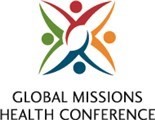Opportunities for Healthcare Workers in Closed Countries
I hope to share both from a Biblical, Missiological, Geo-Political standpoint how health care professionals can be part of a mass movement of Jesus followers to the unreached. Where they can live out who God has created them to be as a passionate and highly qualified medical professional where God is not worshipped. This is not about going to work in Christian hospitals, rather the health care institutions in countries like Saudi Arabia, Turkey, Oman, Dubai where American HCP's are sought after, paid well and if serving with excellence will have opportunities to reflect the glory and goodness of God in these closed environments.
Related Content






Comments
Dr Methusaleh
Catherine Hoelzer